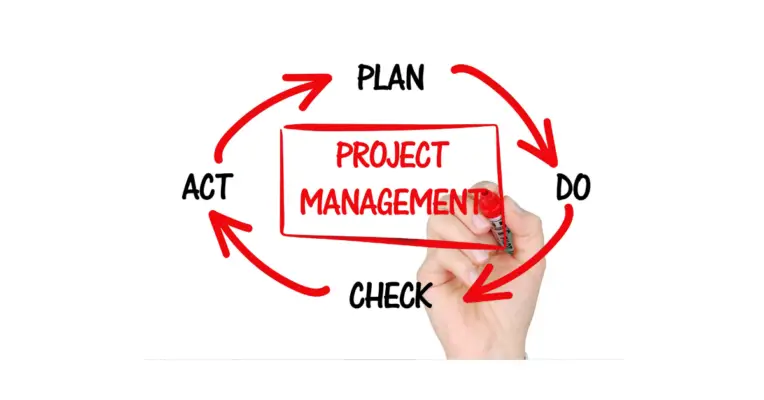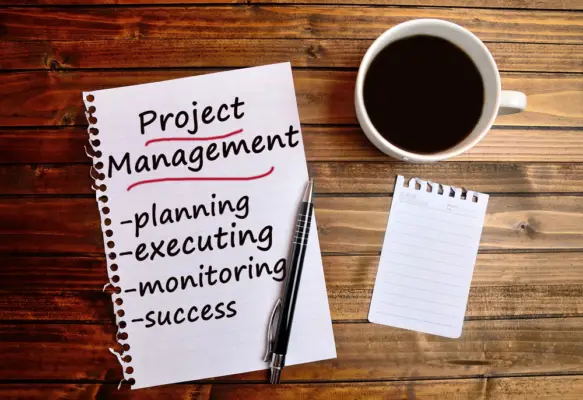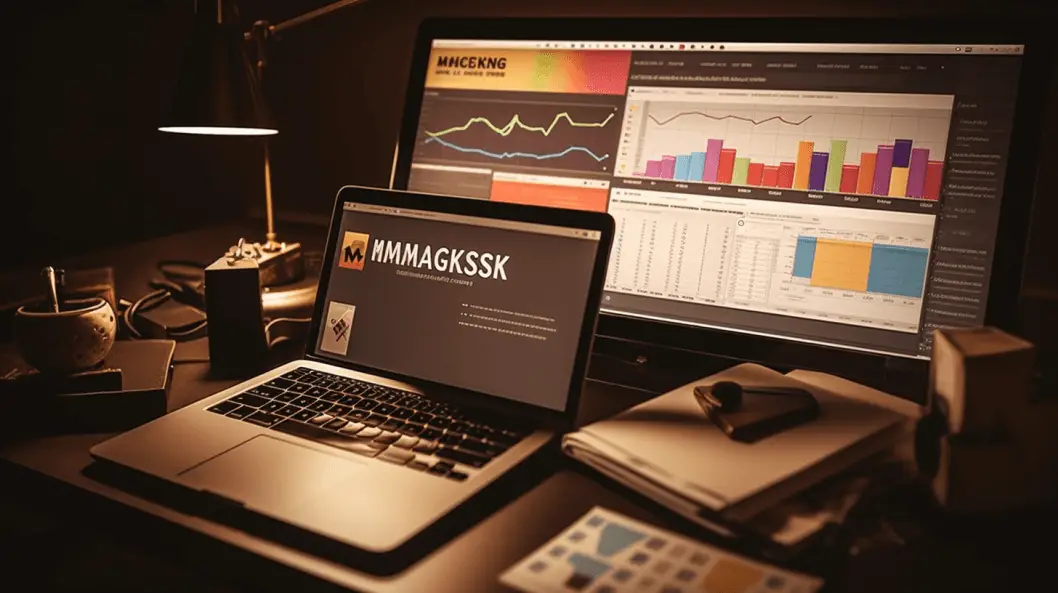Robust risk management is undeniably the backbone of any successful project. Project managers can maximize success by predicting, evaluating, and planning for challenges while also seizing opportunities.
This is because risk management isn’t just about buffering against the negative – it’s also about tapping into the unexpected and turning it into an advantage.
The following article offers deep insights into project risk management, unpacking the nuanced processes of risk identification, assessment, management, and mitigation.
Through a blend of fundamental knowledge and practical examples, the subsequent sections present actionable strategies for managing project risks effectively and leveraging technology to accentuate these efforts.
Understanding project risk management
Project management – it’s an art form and science rolled into one. In the ever-evolving business climate, proficient project management is significant. Paramount to that proficiency is the measure of risk management. So, what does it mean to manage project risks effectively? It means incorporating a sequence of calculated steps devised to identify, analyze, and respond to uncertainty.
The process encompasses three basic steps: identifying risks, evaluating potential impacts, and establishing mitigation strategies. Yet as simple as it may sound, it often goes overlooked when, in fact, it’s a fundamental building block for any successful firm.
Identifying project risks is the first crucial step. It entails meticulous foresight and the ability to scan the business landscape and observe the ‘possible’ from the ‘probable.
Often these risks are grouped into categories, such as technological, financial, legal, and environmental. A skilled project manager will not only identify these risks but also consider the risk propensity. It’s one thing to identify a risk and another to understand the probability of its occurrence.
Once identified, evaluating those potential risks becomes essential. An effective project manager is akin to a skilled economist, scrutinizing potential risks by evaluating the impact each could have on the project’s objective.
Possible impacts can manifest in many forms – from increased costs and delayed deliverables to reputation damage. The evaluation provides quantifiable data assisting in strategic decision-making — an indispensable process for enterprises aiming to stay competitive.
Having identified and evaluated the risks, the stage is now set; it’s time to act. And action means devising mitigation strategies. These defense mechanisms mean either accepting, avoiding, transferring, or mitigating risks.
While acceptance might be suitable for lower impact risks, transferring could be more apt for those with higher negative impacts. Mitigation strategies are all about lessening the impact and/or the probability of the risk occurrence.
Managing risks effectively is the hidden tango requiring graceful maneuvers and calculated steps. It’s not about eliminating all risks – businesses thrive on risks and opportunities.
Still, it definitely involves the intelligent assessment and control of uncertainty. This dance, while daunting, holds the unique potential to revolutionize, innovate, and, above all, guarantee successful navigation through the world of business.

Project Risk Assessment
A cogent risk assessment serves as the backbone for propelling projects down the path of success. Such assessments are instrumental in averting any unforeseen hindrances that could thwart endeavors toward a productive destination.
Accurate risk assessment propels decision-making, sharpens focus, and concurrently fertilizes the soil for the seeds of opportunity.
An astute entrepreneur recognizes risk not purely as a threat but as a looking glass they can peer through to scan their environment; catching sight of latent opportunities veiled under layers of risks.
Their lens of perception pays attention to the nuance of business events and sees the chance to leverage the unavoidable turbulence of business risks into channels that guide toward profitable results.
Acute risk assessment effectively charts the multidimensional, at times elusive, hazy landscape of project outcomes. In this landscape, it fortifies the penetration of two key intelligence lights.
The first is economic acumen which assesses the potential financial impact, and the second is strategic farsightedness, which appraises probable non-financial outcomes.
Risk assessment acts akin to business geology. Just as geological actions beneath the surface cause repercussions on the terrain above, hidden risk forces beneath the surface of a project can shape the terrain of project outcomes.
The waves from a lackadaisical approach to risk management can erode the profit margins and the customer base, causing landslides in market share.
Accurate risk assessment also involves shrewd calculations of ripple effects. Each project decision can reverberate waves of risks which, when anticipated, can be transformed into a competitive advantage.
This discipline of risk assessment fortifies the entrepreneur’s agility to swerve around perceived threats and navigate towards possibilities of amplified ROI and enhanced business repute.
Rooted in solid foundations of market expertise and penetrative intuition, risk assessments provide the sustenance for a sound project ecosystem.
They cultivate a nourishing base to drive innovation. When elevated risks circle like predatory hawks, shrewd business leaders perceive this as not a moment to hide but a chance to soar on the wind current of calculated daring.
Moreover, accurate risk assessment cultivates camaraderie within stakeholder relationships due to its heightened transparency. Investors, partners, and customers acquire fortified confidence in the project with such an approach, stimulating a fertile ambiance for partnerships and patronage to flourish.
Reimagined, risk is the fine sandpaper that has the potential to smoothen a project’s path when wielded with dexterity.
Accurate risk assessment functions as the compass that steers projects away from the rocky shores of threats towards the serene seas of success. Both a deterrent and a spurring whip, it converts hurdles into stepping stones leading to better project outcomes.
In conclusion, an accurate risk assessment conducted by proficient leaders has the power to transmute a probable project calamity into a stable business success story.
When aptly managed, the reigns of risk not only prevent derailment but also liberally galvanize a project toward progressive business objectives. As the guardians of project prosperity, such assessments are no less than the heartbeat of a successful business endeavor.

Risk Mitigation Strategies
When it comes to wading through the labyrinth of risk management best practices and devising an effective blueprint for risk mitigation, there is rarely a one-size-fits-all solution.
This can be attributed to the dynamic nature of projects – spanning diverse industries, scales, and functions. No matter how experienced entrepreneurs are or how knowledgeable they are in their field, each project introduces unique risks and with it, the opportunity for strategic mitigation.
Having a skilled, savvy project management team is imperative for assured success. But beyond this, understanding and implementing industry-specific best practices in risk mitigation elevates project management from mere execution to strategic leadership.
Here are some of the key best practices that, when incorporated into your project management toolbox, can give your endeavors the edge they need.
There’s a known saying: ‘Plan for the worst but hope for the best‘. This could not be truer than in the world of project management. The practice of contingency planning encapsulates this mantra.
It involves pre-emptive planning to counter potential project risks, with multiple alternative approaches at the ready for when things inevitably go awry.
The idea here is not to predict every potential pitfall but to swiftly respond to adversity when it arises. Proactive, not reactive.
Successful risk mitigation begins and ends with communication. It is the lifeblood of any project, with effects on decision-making, team morale, innovation, and error avoidance.
A proactive communication strategy can mitigate risks even before they emerge. Emphasize the importance of open dialogue amongst team members, hold regular check-in meetings, encourage constructive feedback, and ensure key decisions and updates are relayed promptly and precisely.
Strategic risk diversification, akin to that used in investment portfolios, can spell success even in the realm of project management.
This involves spreading available resources across different parts of a project to avoid the severity of potential impacts through the failure of a sole area.
Risk diversification aims not to ensure every aspect of the project runs flawlessly but to guarantee that setbacks in one area won’t topple the entire project. It’s about building resilience through balance.
Lastly, a powerful tool often undermined in risk mitigation strategies is technology. Automated risk mitigation tools, powered by Artificial Intelligence and Machine Learning, streamline risk management processes by leveraging data for accurate predictions and proposing solutions.
Moreover, the use of cloud-based project management software allows for enhanced real-time communication, effective tracking, and resource management – paving the way for fewer surprises and more control.
Risk mitigation shouldn’t be thought of merely as an unsolicited necessity in project management but rather as the bedrock of strategic planning.
When instilled into the core of your project philosophy, these best practices can morph feared risks into welcomed opportunities for growth and innovation. Every project journey may well be peppered with risks, but with effective mitigation plans, the ship can get back on course to reach the shores of success.

Risk Monitoring & Review
As the business world evolves into a realm of dynamic ventures, static risk management strategies could quickly stagnate a project’s potential. With the advent of continuous risk monitoring, we are tapping into an active, real-time assessment strategy that will keep your project at the cutting edge amidst the undulating waves of the market.
Think of continuous risk monitoring as the heartbeat of your project. It provides a constant stream of critical data that informs your project at any given time – allowing swift and efficient response to potential concerns or opportunities.
It has immense potential to build confidence within the project, fostering a culture of openness, transparency, and resilience.
Insightful continuous risk monitoring relies heavily on the tandem of technological advancements and strategic diversification. Tools such as predictive analytics, AI, and machine learning, combined with refreshing iterations of risk diversification strategies, move projects beyond the constraints of conventional risk management.
They open new avenues of understanding, transforming risk from a business challenge into a strategic advantage.
A key benefit of this innovation is that it allows for dynamic mitigation. Cascading contingency plans can be activated effectively and seamlessly, ensuring no disruptions to project operations while retaining focus on overarching goals in the midst of evolving risks.
This proactiveness bred by continuous monitoring keeps the project not only afloat but thriving amid uncertainty.
The seamless integration of continuous risk monitoring into project philosophy emphasizes the importance of a project’s conscientious and open communication culture.
Intelligently designed automated alerts revitalize the essence of risk management, ensuring every team member is informed and prepared. This boosts motivation, cohesiveness, and accountability within the project team, positioning the project for surpassed success.
To sum up, continuous risk monitoring has immense potential yet to be fully tapped. With its associated benefits such as increased transparency, efficiency, resilience, and especially, the ability to transform risks into strategic advantages, it is no doubt going to revolutionize the world of project management.
As savvy business leaders, let us seize the day and bring to life the undiscovered prowess of continuous risk monitoring in project management.

Leveraging technology in risk management
Undeniably, technology plays a paramount role in project risk management today, reshaping and enhancing the landscape of our modern business world.
As we continue charting the numerous facets of project management and its commingling with risk management, it’s pivotal to observe the fundamental significance of technology in this intricate matrix.
Artificial intelligence and machine learning, to name a few, have astoundingly bridged the gaps and surmounted the barriers in identifying and evaluating project risks.
These sophisticated technological tools bring unprecedented predictability and forecast accuracy when identifying potential risks, allowing project managers to avoid significant obstacles even before they occur.
Technology also propels risk evaluation into extreme efficiency. As projects become more complex and geographically distributed, the pact of integrated software systems breaks down the data silos, facilitating rich insights during risk assessment.
This integration serves as the springboard for agile strategic decision-making, which can veer a project towards success.
In the panorama of mitigation strategies, technology takes center stage too. It amplifies the efficiency of the four primary tactics: acceptance, avoidance, transfer, and mitigation, bringing to the forefront automated risk mitigation tools.
These solutions, whether it’s from duplicitous data input to identifying errors in real-time, drastically cut down errors and strengthen the project’s overall risk resilience.
Moreover, the advent of technology cultivates the potential and the necessity of continuous risk monitoring, which, traditionally, was nearly impossible, tedious, and time-consuming at best.
Advanced analytics and real-time dashboards help maintain a cohesive, clear depiction of current risk status and trends, equipping project managers and stakeholders with the information they need to make informed decisions.
Also noteworthy is the positive role of technology in the process of strategic risk diversification. As it provides in-depth analysis and insights about the probable risks, it creates opportunities for project managers to practice strategic diversification to spread and minimize the potential negative impacts.
Furthermore, technology bakes the vital ethos of communication and transparency into its core. Platforms like Slack or Microsoft Teams foster open communication between team members, break information silos, and lessen the probability of potential risk culminating from miscommunication.
The value addition of technology in project risk management is undeniable and must be commended for its transformative potential in bringing method to the madness.
Yet, technology should not be seen as a silver bullet to all risk challenges – it’s merely one piece of a comprehensive strategy to handle risk better. After all, not even the most advanced AI can substitute the indispensable human elements such as proficient leadership, strategic foresight, and economic acumen.
Therefore, to leverage the full potential of technology in enhancing risk management, firms must continuously strive to create a risk-aware culture that seamlessly amalgamates technology with traditional risk management methods.
This combination can maximize productivity, drive innovation, and ultimately revolutionize project management.
In conclusion, the integration of technology into project risk management is more than a trend — it is becoming a standard, an integral part of the project management toolkit.
The rapid pace of technological advancements promise an exciting future for project risk management. As these tools become more sophisticated and accessible, the possibilities for reducing risk, increasing efficiency, and driving project success are bound to be limitless.

Conclusion
Sound risk management shapes the very cornerstone of successful project completion, requiring an intricate fusion of meticulous planning, realistic assessment, adaptive mitigation strategies, and continuous risk monitoring.
The leveraging of technology further enhances these stages, easing the intense manual effort and escalating the efficiency levels of risk management.
Gaining a deep understanding of concepts, strategies, and tools, one can navigate project management’s turbulent waters and turn risky situations into manageable challenges. Effective risk management is a proactive process.
It requires foresight, strategic thinking, and consistent monitoring- elements that form the core stimulus of the ensuing discourse on effective project risk management.

Chris Ekai is a Risk Management expert with over 10 years of experience in the field. He has a Master’s(MSc) degree in Risk Management from University of Portsmouth and is a CPA and Finance professional. He currently works as a Content Manager at Risk Publishing, writing about Enterprise Risk Management, Business Continuity Management and Project Management.

